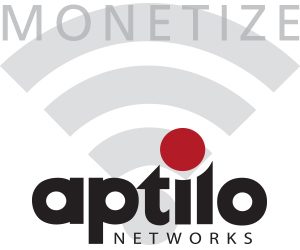Monetization strategies for Service Provider Wi-Fi
0This content is only available in English
By José Farias Sales Director LATAM Aptilo Networks
When I explain to people what Aptilo Networks does, that we turn service providers’ Wi-Fi networks into Wi-Fi services, the first reaction is always the same. Some say “Aha, so you are behind the hotspot portals that I use to sign-up and pay for Wi-Fi services when I am travelling? Your service provider customers must make a ton of money on this.” Others goes so far to say “How can anyone make money on Wi-Fi, it’s supposed to be free!”
They are normally very surprised when I say that it’s quite possible to monetize free Wi-Fi and that any money coming from hotspot services are just the tip of the iceberg. It’s only a fraction of what Aptilo does and it is definitively only the icing on the cake when it comes to service provider revenue.
So, where is the money in Service Provider Wi-Fi? Just like with the iceberg, the big volume is hidden underneath the surface in indirect monetization.
“Customer retention is by far the largest component of the Service Provider Wi-Fi business case!”
Indirect Wi-Fi monetization – customer retention
According to analyst firm Tefficient, the cost of churn and churn prevention is typically around 15% of mobile service revenue – in some cases it’s above 20%. This means that a $10 billion operator spends $1.5-2.0 billion every year to stand still, to have the same number of subscribers at the end of the year as they had in the beginning.
Tefficient came to the following conclusion in their Wi-Fi – The Last Piece of the Customer Retention Puzzle? Analysis #1 2016: “Wi-Fi is a piece of the customer retention puzzle. The Wi-Fi piece needs to be accompanied by other pieces, but no puzzle will be finished without it” (download the full analysis here https://www.aptilo.com/puzzle).
Let’s take a look at a real case from Tefficient’s analysis. Rogers in Canada with 6.9 billion Canadian dollars in mobile service revenue (Q3-2014 to Q3-2015). Rogers’ reported cost to retain mobile customers was a little bit above 1 billion Canadian dollars, that’s 15.5% of their mobile service revenue. Unlike their competitors, Rogers does not offer Wi-Fi services.
In our opinion there is no reason why Rogers couldn’t use Wi-Fi to lower their retention cost to the same level as their competitors Bell and Telus, both of which are successful with Wi-Fi, and both spend 12-13% on subscriber retention cost.
Customer churn is a complex area with a lot of different dependencies. But, let us for a moment suppose that the reason for the difference in churn is whether or not the carrier offers Wi-Fi services.
What if Rogers, by using Wi-Fi services, could come down to the level of Bell, spending only 12.4% of mobile service revenue on retention? Then they would reduce their total mobile retention cost by 20%, creating an annual savings of 215 million Canadian dollars. This illustrates the point I want to make: customer retention is by far the largest component of the Service Provider Wi-Fi business case!
Indirect Wi-Fi monetization – Wi-Fi Offload
Wi-Fi Offload, where users are automatically flying on to a secure encrypted Wi-Fi network using seamless SIM authentication, is another great example of indirect monetization. You can choose to either offload the entire cellular network by using local data traffic break-out to the nearest Internet connection, or just offload the radio part backhauling the traffic to the mobile core. In Aptilo’s customer base, local break-out is by far the most common method, likely because we can offer the same level of policy and charging control for local break-out by integrating with the core and OSS/BSS systems.
The potential cost savings with Wi-Fi Offload in dense areas varies depending on many factors, but studies show that the cost (per bit TCO) of delivering data using Wi-Fi Offload is only 10-33% of the cost in 3G/4G macro networks.
Indirect Wi-Fi monetization – Wi-Fi Calling
Wi-Fi is everywhere and service providers can use any Wi-Fi network for their Wi-Fi Calling services, including the one in your home. The main reason for service providers to deploy Wi-Fi Calling is to enhance indoor coverage…which translates into more satisfied customers, so it is basically a customer-retention game, and we all know the potential in reducing churn.
Additionally, operators that have planned to implement femtocells or distributed antenna systems (DAS) to cover subscribers’ homes can now achieve large savings in both CAPEX and OPEX by utilizing a network that is already there – the subscriber’s own Wi-Fi network.
“But, are there really no good direct monetization options for Service Provider Wi-Fi?”
Direct Wi-Fi Monetization – Hotspot services
Even if it’s just the icing on the cake, the extra hotspot service revenue from ad-hoc users is of course very welcome. These services are also a good way of recruiting new subscribers. “Do you like our Wi-Fi service? Become a subscriber and get it included in your service.”
Direct Wi-Fi Monetization – Upsell
A more important direct Wi-Fi monetization form is to increase ARPU or at least stop the trend of decreasing ARPU. There are many examples globally of this.
Telia in Sweden uses Wi-Fi to move customers to more expensive plans by just including Wi-Fi in the higher tiers. Others such as SingTel in Singapore and Telenet Belgium simply raised their price by $2-3 USD / month because they have Wi-Fi services. Proximus in Belgium bundles Wi-Fi with other services such as TV. Wi-Fi is only available for multi-play customers.
Direct Wi-Fi Monetization – Venue Wi-Fi
Selling attractive B2B guest Wi-Fi services to venues such as hotels, healthcare providers, enterprises, stadiums and retailers is perhaps the biggest growth opportunity for service providers working in an otherwise saturated market. Guest Wi-Fi services also provide a way for the operators to go into these businesses to sell more products and services.
Venue Wi-Fi not only provides additional revenue, it is also an excellent way to gain indoor coverage for your subscribers!
I will speak on the subject “Monetization Strategies for Service Providers” at Futurecom on October 18 at 2:40 pm in room “Chile”. I hope to see you there.













